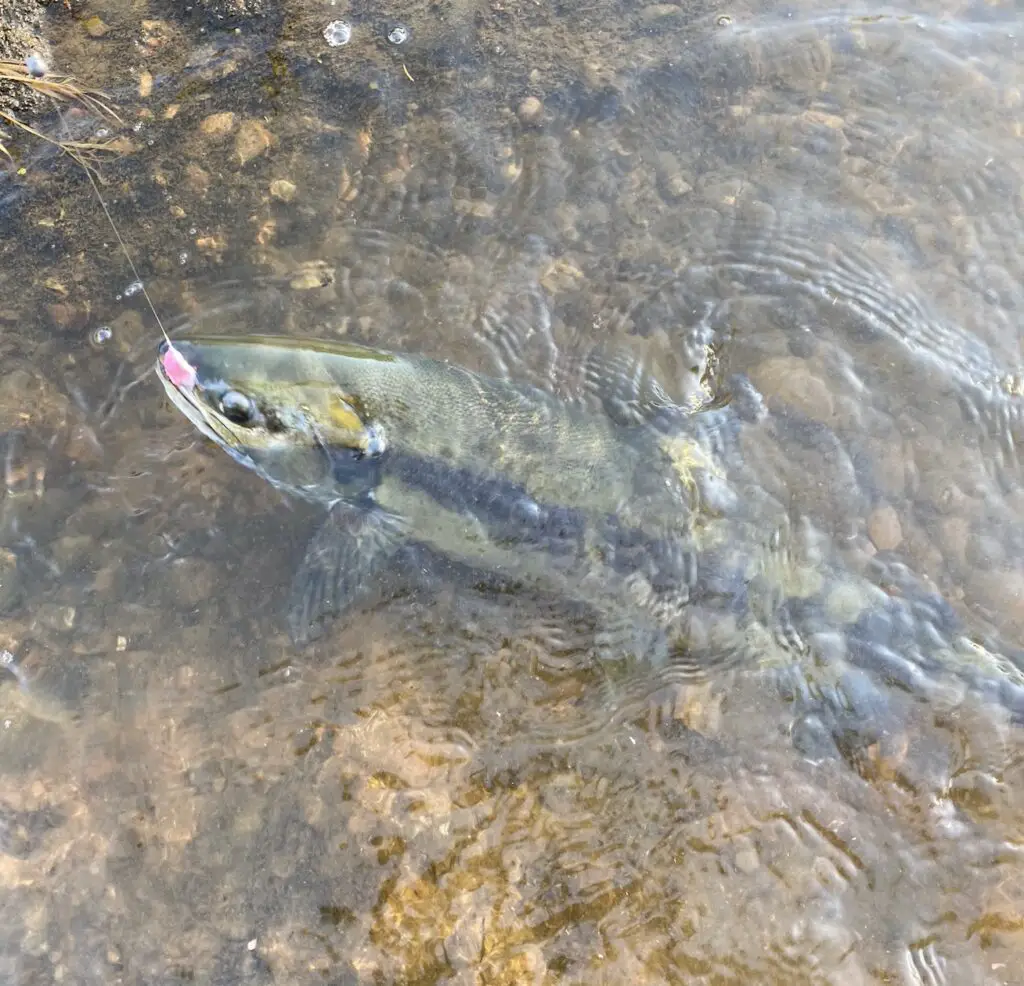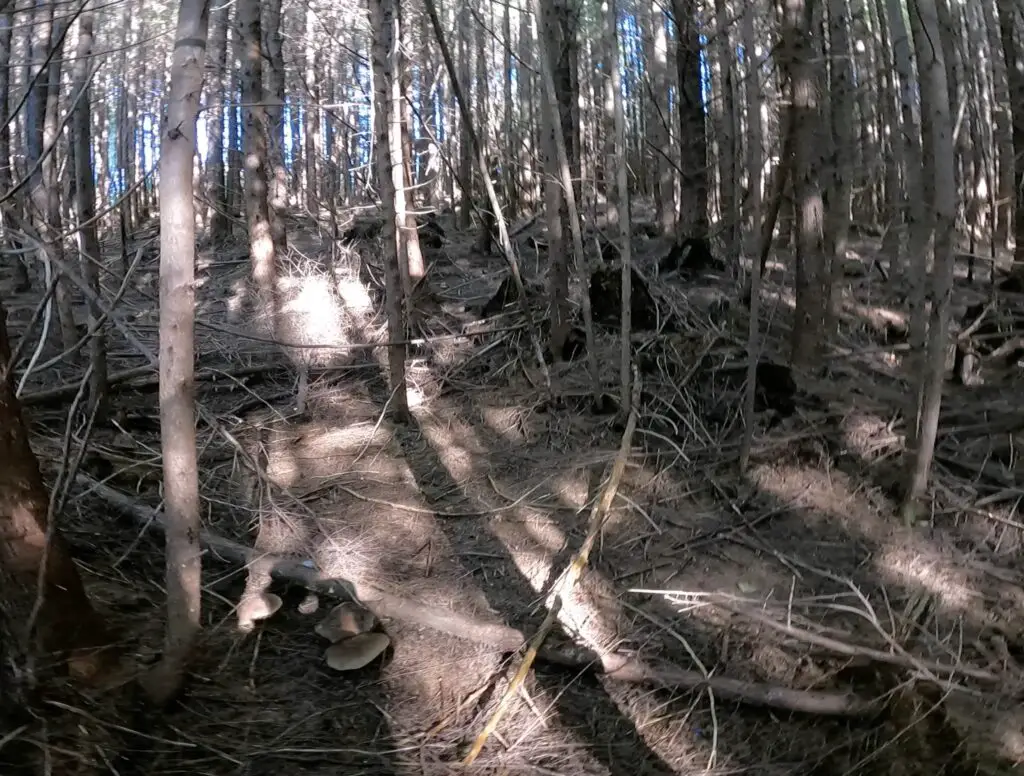
I recently got back from a coastal river, where my plan was to take part in three epic PNW harvest opportunities, all within a short distance of each other.
- River fishing for salmon
- Foraging for mushrooms
- Digging for razor clams
Where else can all three of these activities be done outside the Pacific Northwest? I love that we can plan a day like within a few hours drive!
I got on the road a bit later than I typically would have, given I was planning to be gone the entire day, and this time of year, there are far fewer folks out on the river on a weekday.
Nobody’s usually trying to beat you to a coastal river fishing spot for chum salmon from the bank, though I did encounter some folks who got down there just ahead of me at around 9am.
I brought 3 rods down to the bank of the river as I frequently do during this time of year, setup to fish three different techniques:
- Float fishing
- Spinners
- Twitching jigs
I started out throwing cured salmon eggs under a float as I often do, for a few reasons. If I’m fishing a spot I’m highly confident is holding salmon, my next concern is to fish as stealthily a method as I can. I don’t want to disturb these holding fish and give them a reason to potentially move up.

Additionally, the river had been dropping steadily for 5 days, which generally translates to lower flows and very clear, high visibility water. In fact, I could see the bottom of the river in an area that looked to be 7-10 ft deep. The river was magnificent that day!
I’m a huge believer in following water flows to pick my days to get out on the water. The best fishing will typically be encountered 1-3 days after high water (depending on the river), but sometimes you just have to get out.
I started getting bit immediately.

I battled chum salmon after chum salmon, along with one darker coho mixed in. Chum are absolutely wonderful salmon. They bite and fight among the best of the 5 pacific salmon species. I don’t keep these fish and I don’t need to as my freezer is already full of higher quality chinook and coho.
I did throw a spinner and a twitching jig, but I could see the salmon in the water either being uninterested or in some cases scattering altogether.
Eventually, some other anglers showed up and tried to fish right next to me. I politely informed them that I was fishing this area and I would prefer it if they fished somewhere else.
They decided that meant literally to stand somewhere else, such as the opposite bank of where I was fishing and still target my little drift of skittish fish.
And of course these “anglers” were snagging. I mean c’mon! Chum salmon are such great biters, why would you need to floss and snag these fish?
Their disturbance to the drift stopped the egg bite immediately.
That’s when I decided to tie on the ultimate chum catching rig: A purple / pink jig tipped with a bit of prawn!
I had a feeling the river might be overrun with chum salmon, so I came prepared.
After hooking two more chum on two consecutive casts, I decided I had had enough fun and I was too disgusted with the folks on the opposite bank, snagging fish, dragging them onto the rocks to take pictures, and later releasing the fish. The lack of respect some anglers show this incredible resource is beyond disappointing.
A shortcut to mushrooms
Props to you if you know what famous book the chapter title “shortcut to mushrooms” appears in!
On my way back to my truck I decided to take a bit of a shortcut and veer off the well trodden fisherman’s path.

I love wandering the mushroom woods. Undergrowth is always more scarce as light needs to be able to penetrate.
So we are talking more mature forest, often covered in layers of moss or duff (dead leaves, debris, etc).
Mushroom foraging is a bit like searching for treasure or completing a very compelling scavenger hunt. I will have some resources up soon about really how to do this safely.
Safety is the primary and ultimate concern of all mushroom foragers who are still around to share about their foraging adventures.
While you can take a shortcut to mushrooms, there are no shortcuts that should be taken with safety or identifying edible mushrooms.
I would say that one of our most important rules is simply to be selective about which mushrooms we even bother with. There are so many mushrooms which look very similar to a great many other mushrooms.
There are also many great edible species which are quite easy to differentiate from anything dangerous or inedible. Now, it’s important to ID these mushrooms in their prime condition. Too old or too young and they can be potentially confused with other species.

As I made my way through the mushroom woods, I spotted so many different kinds of mushrooms, but I eventually came up on a pair of these wonderful king bolete mushrooms, also known as the Porcini mushroom. A quick google search will reveal that these can go for 40-50 $ per pound, and are highly sought after for their rich flavor. Score!
I don’t currently sell any wild mushrooms I find though as I really enjoy eating them and we don’t harvest that many so as to have extra to sell.
After getting back to my rig, I motored for 30 minutes to one of our favorite mushroom foraging spots. I have this labeled as bolete heaven on my map, because I’ve never seen so many bolete mushrooms of incredible size and concentration in one area such as this.

I saw dusky boletes with a cap diameter over 12″. Many many admirable boletes, which are quite striking to behold. I harvested several of the admirables, a few more kings and a good number of chanterelles before leaving.
What happened with razor clam digging?

I was planning to hit another mushroom spot to kill time before I got on the beach to dig some clams, but I got a call about a meeting I was going to attend at 8pm and realized the agenda required me to do some prep.
There’s no way I could do it all, and I was kind of feeling like I had maxed out my fun already. There will be many more digs to get in on!